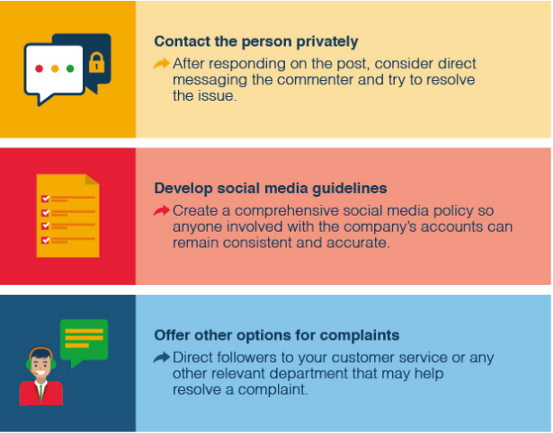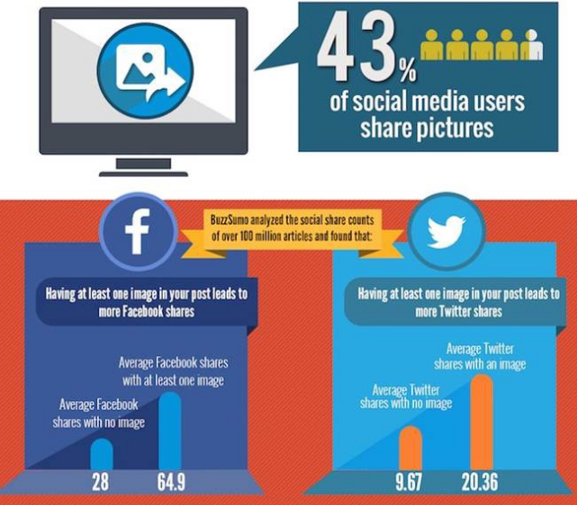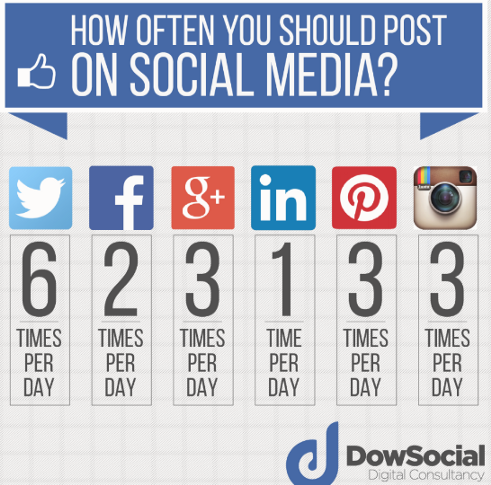10 Common Social Media Mistakes You Are Making — And What To Do Instead

Whether you are just getting started or you are well acquainted with the do’s and don’ts of social media marketing, it pays to take a fresh look at some of the most common mistakes businesses make online to ensure you are not making them too.
Here are 10 social media management mistakes I see happen most often — and what to do instead.
#1 You’re Being Overly Promotional On Social Media
Posting content that focuses solely on your own offering is a sure-fire way to turn people off.
Sprout Social surveyed more than 1,000 Facebook, Twitter and Instagram users to determine what annoys them about brands on social, what drives them to unfollow and which industries are on the right side of the line. Respondents indicated that the most annoying thing brands do on social is over-promote.

Do this instead: Follow the 80/20 rule: 80 percent non-promotional content and 20 percent posts with calls to action. Experiment with posting quality content from others. To quickly find great relevant content on Facebook, use the Pages to Watch feature in your Facebook Page Insights.
#2 You’re Not Responding To Comments/Complaints
The perils of over-promotion only escalate if brands are unresponsive.
1 in 4 people become annoyed when you don’t respond to them. And seeing as only 1 in 10 messages on social actually get a reply from brands, it’s likely that you’re ticking off a lot of fans. Getting into arguments with trolls doesn’t look great for your brand, but ignoring legitimate complaints, questions, or concerns is a major mistake.
Do this instead: Although it’s tempting sometimes, don’t delete negative comments; instead respond to them in a positive and timely manner. While this advice is based on patience and understanding through communication and conversation, it does not apply to persistent trolls and that intent upon abusing you.


#3 You Haven’t Defined Clear Social Media Objectives
Without goals, it’s hard to know exactly how well your social media marketing is performing.
It’s no secret that goal setting increases your likelihood of social media success, yet it never ceases to amaze me how many businesses have given scant thought to creating their social media goals.
Clear goals will not only propel your strategy forward, but they will also serve as defined metrics when it comes to measuring your progress. Describe the specific goals and outcomes you’re seeking to accomplish with your social media activity. These should be aligned with your business goals.
Do this instead: Set SMART goals for your social media marketing. For a goal to become a reality, it needs to be specific, measurable, attainable, and realistic, as well as time-specific, these are often called SMART goals.

#4 You’re On The Wrong Social Platform
Not all social media is created equal. Different platforms attract different audiences.
It’s important, especially if your resources are limited, that you’re focusing your social media efforts in places that will generate the most return for your efforts, but you can’t just guess at which ones those are. There’s no point in spending your time on a particular social network if your audience isn’t there. Nor should you spread yourself too thin by trying to be everywhere at once.
Every additional platform your business is active on means additional time and effort required to engage on and create tailored content for that platform. Before becoming active on a social media channel, make sure to do the proper research. What is the target market? Is our target audience active on this channel? What are our competitors doing?
Do this instead: Use Surveys (e.g. Survey Monkey), Polls (PollDaddy; Facebook; Twitter), and publicly available reports to match your audience demographics to the social networks they use.

#5 You're Not Posting Enough Images
Visual content is 40x more likely to get shared on social media than other types of content according to research by Buffer.
People connect more emotionally with images than text, and in an increasingly crowded digital landscape, when our minds are attracted more readily to content that draws our eye, images can break through the online content clutter to quickly communicate your marketing messages.
The aesthetic quality of images encourages engagement and shares not just on these channels but also on Twitter and Facebook — research has shown that a tweet or a Facebook post that includes an image draws more attention than a text-only update.

Do this instead: Add an image to all your online posts — even those that are text-based. To aid brand recognition and create a strong visual identity, maintain consistency across all your images by sticking to the same colours, fonts, and layouts.
#6 You’re Posting Infrequently
You need to post consistently to stay in front of your audience’s eyes and keep growing.
Posting consistently doesn’t mean you should choose quantity over quality. Posting too much might actually result in a decline in reach. Focus instead on posting high-quality, relevant updates your audience will want to share.

Do this instead: Set aside one day each month to map out upcoming events, holidays, and so on, which you would like to write or post about. Then use a simple excel spreadsheet to create your content calendar. Do the same thing with another spreadsheet for social media postings.
#7 You’re Posting Irrelevant Content
If you want people to get excited about sharing your content, you need to give them something worth sharing.
Boring or irrelevant content will simply be ignored. Create tailored content for each platform — people have different expectations for the content they want to see on each platform.
Do this instead: Don’t just add to the online chatter. If you’re not adding value, you’re just adding noise. Before you post something, stop and ask yourself would this pass the re-share test? Why would I want to click on this information? Why would I want to share it with my friends/family? Hootsuite recommends you set up an editorial process for your posts. To help you they have prepared a handy flowchart, along with a list of questions to aid you with the vetting of your social media posts.

#8 Your Headlines Are Boring
Your headline is the first impression you make on a prospective reader.
No matter how amazing your content is, few people are going to click through to read it if they’re not immediately captivated by your headline.

Share the value your readers will get if they continue to read your post. “One way to think about this”, according to CoSchedule “is with the classic marketing technique, WIIFM, otherwise known as what’s in it for me?”
Do this instead: There are several free tools available to help you analyze your headlines. Try this one from CoSchedule which analyses your title and produces a score based on character length, emotional resonance, and keyword strength.
#9 Not Monitoring Social Media
Social media is a two-way conversation that requires you to listen more than you talk.
It’s easy to get caught up in the metric of having the most likes on Facebook, views on YouTube and followers on Twitter as an indicator of your impact. But likes, views and followers are not an objective measure of your brand’s true position. You need to dig deeper to find what people truly think of your product or service.
Do this instead: Set up keyword searches to incorporate your brand name and include words relevant to your industry. Don’t just monitor mentions of your brand’s name. Aim to evaluate sentiments attached to those mentions. Tweets that indicate issues with your company should be resolved immediately. Doing so strengthens public perception that your focus is strongly centered on customer satisfaction.
#10 Not Measuring Results
How do you know if all the time you’re investing in social media marketing is paying off?
You don’t know unless you put a system in place to measure and analyse your efforts.

Try This Fix: Use built-in tools such as Facebook Insights and Twitter Analytics, third-party tools, and measurement of social traffic and conversion with Google Analytics to track and measure your progress.














I agree with a lot of the points you made in this article. If you are looking for the best social media scheduler free, then visit Aweosmesuite Inc. I appreciate the work you have put into this and hope you continue writing on this subject.
ReplyDelete